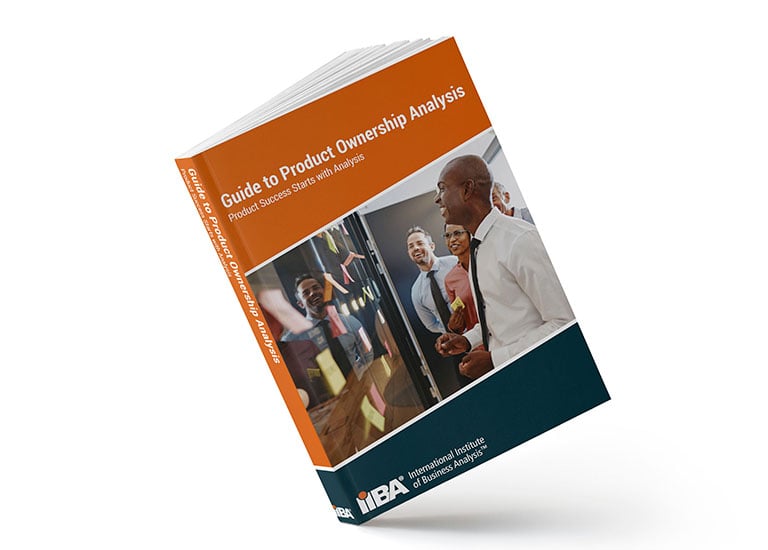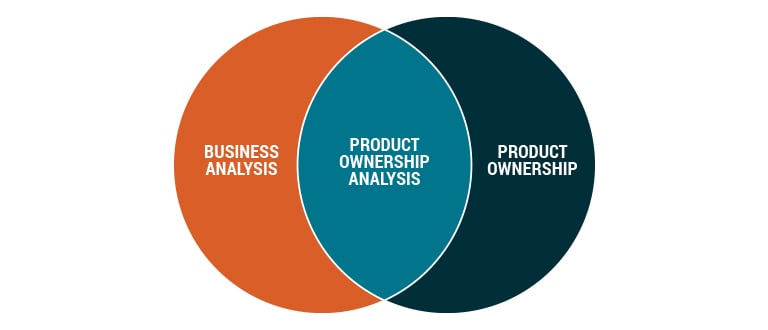Product Ownership vs Business Analysis – are they the same?
As a manager for Business Analyst (BA) resources working in a scrum environment, I can’t tell you how many times I’ve been asked if the BA and the Product Owner (PO) are doing the same work. Conversely, if there is a PO already on the scrum team, I’m asked why the team needs a BA. Why do these questions come up? Can the PO and the BA be the same person?
To answer the first question – can one person serve in both roles? Let’s evaluate what each role does, based on my experience.
Product Owner role
In many organizations, the Product Owner also has a Product Manager title and is responsible for making decisions about the product, for managing the product’s strategic roadmap and for communicating that roadmap. If there are cross-product impacts, then coordination of feature prioritization with other product POs is necessary - because certainly those in the C-suite are going to want to see a consolidated view of all product priorities.
Business Analyst role
Similar to the PO, the BA plays a critical role in working with the scrum team to execute the product vision by defining needs and recommend solutions that deliver value. The BA goes a bit deeper by breaking down high level product features into user stories, with the appropriate amount of detail. This may result in other BA artifacts –some of the most common examples I’ve experienced are capabilities gap analysis and process flow diagrams.
In an environment with global initiatives and enterprise level projects, the work required for the PO and the BA are more than one person has hours in a day. For a person to perform both roles AND be effective is the real question. Inevitably with one person filling both roles, one of the roles will suffer – either the vision for the product suffers or the requirements for the sprint are not ready in time – either situation will have a negative impact on the product’s future.
To answer the second question – why do I need a BA if I have a PO? Take a look at the list below to see if your agile teams have experienced any of these situations.
- Requirements Scope Change During Sprint. Agile teams can easily cross the fine line from “just enough information” in a story, to leaving the story so high level that parts of the work are not considered until the development and testing are already underway. It’s the BAs responsibility to ensure that all Acceptance Criteria - both functional and non-functional – are considered for each unit of work.
- Tickets Too Big To Complete In Sprint. It takes a LOT of legwork to get a ticket to be the proper size while still being an independent and measurable unit of work. A Business Analyst takes the time to get to know the team and to format the tickets into a consistent size for manageable work.
- Road Blocks Derail Sprint. Even the best Scrum Masters can have trouble removing all roadblocks during a sprint. A Business Analyst can provide support by identifying and removing roadblocks for requirements before the stories are brought into sprint. This is especially important when stories require coordination with other teams.
- Innovative Solutions Lost. When a team is in the process of identifying an innovative solution, everyone in the meeting needs their heads in the game. The Business Analyst is the one who can facilitate the brainstorming and capture ideas. BAs also write down questions and observations that come up and take the time to follow up on those items.
- The Team Is Not In Alignment. The Product Owner, Scrum Master, Developer, and Tester all have very different needs and levels of understanding of the work. The Business Analyst can be the unbiased party that focuses on making sure everyone is on the same page and has the information they need to complete their portion of the work.
In situations when a Product Owner is also a Product Manager, that individual simply may not have the time to invest in these detailed execution activities nor have the knowledge of the individual team members’ needs; whereas, a BA does!
So hopefully this shows that the PO and the BA roles are just that – roles. Certainly, the same person can have the skills necessary to successfully work in both roles. If the organizational structure allows for one individual to successfully function as both a PO and BA – that’s fantastic! If not, 2 individuals playing the 2 different roles can still co-exist.
How does this scenario work in your organization?


